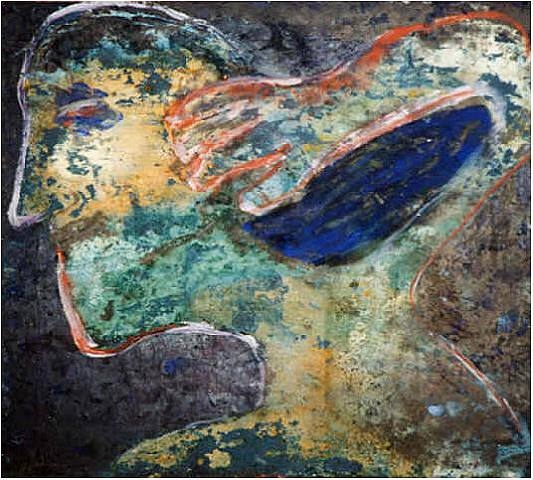
Home | Gallery
Guide | The Provincetown AIDS Art Archives Contact Us | How You Can Help
Contact Us | How You Can Help
A | B | C | D | E | F | G | H | I | J | K | L | M | N | O | P | Q | R | S | T | U | V | W | Y | Z
George McNeil
1908–1995

Louis, oil on paper on panel, 20 h x 22.5 w inches, 1981
George McNeil summered in Provincetown 1948-62 and exhibited every year at the HCE Gallery from its founding by Nat Halper in 1955.
In the mid-1930s, when he was a student of Hans Hofmann, he was one of the people ( the person, according to Lillian Orlowsky) who persuaded Hofmann to locate his summer school in Provincetown rather than Gloucester. He was a participant in the Forum 49 at PAAM.
While he was essentially a New York artist, he certainly thought of himself as a Provincetown artist during his time here, and others thought so too.
. . . . . . . . .
George McNeil (1908-1995) was an vital and influential artist whose career spanned the whole of the Post-war American art era. He attended Pratt Institute and the Art Students' League, where he studied with Jan Matulka. From 1932-6 he studied with Hans Hofmann, becoming Hofmann's monitor. He worked for the W.P.A. Federal Art Project and in 1936 he became one of the founding members of the American Abstract Artists group; at the New York World's Fair in 1939, he was one of the few abstract artists whose work was selected. During World War II he served in the U.S. Navy.
In the late 1940s McNeil taught at the University of Wyoming and then taught art and art history at Pratt Institute until 1981, and at the New York Studio School until 1981, influencing generations of young artists. In 1989 McNeil was elected to the American Institute of Arts and Letters.
A pioneer Abstract Expressionist of the New York School, McNeil had over forty solo exhibitions during his lifetime, beginning with the Egan Gallery in 1950. His art grows from the abstract: in his pure abstractions through the early 1960s, the subject matter is passionate metaphor. Later, dynamic situations involving dancers, bathers, discos, New York City, football or graffiti gyrate around the canvas. This high-energy content is expressed through virtuoso oil paint technique in which rich texture and color define complex abstract volumes. McNeil used his comprehensive authority over oil paint to push for an ever-deeper exploration of sensation.
George McNeil's work is included in numerous museum collections around the country, including the Museum of Modern Art, NY, the Metropolitan Museum of Art, NY, the Whitney Museum, NY, the San Francisco Museum of Art, the Los Angeles Museum of Contemporary Art and the Walker Art Center, MN, amongst many others. His work is represented in New York and worldwide by Ameringer/McEnery/Yohe and in the Boston/Cape Cod area by Acme Fine Art.
Helen McNeil, May 2013
..................................................
© 2001 - 2017 Provincetown Artist Registry | P.O. Box 675, North Truro, MA 02652 | 508 487-0011